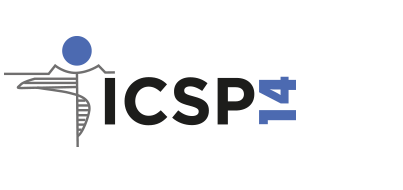14th International Conference on Shot Peening
Abstract [84]
Ruoyu Yang, Yongxiang Hu
Shanghai Jiao Tong University, School of Mechanical Engineering, No.800 Dongchuan Road, Shanghai, China – huyx@sjtu.edu.cn
Introduction
Laser peening (LP) is a competitive surface treatment to improve anti-fatigue performance by introducing compressive residual stresses on the surface layer of components [1]. Spanrad and Tong observed that LPed Ti6Al4V aerofoil specimens obtained five to ten times fatigue life extension which suffered FOD [2]. However, components with thin sections treated by LP are always accompanied by undesired distortions because of their low rigidity. Apart from the convex curvature of components induced by LP [3]. Hu et al. illustrated material thickness and laser intensity effects on distortion direction variations [4]. Further investigations showed that not only the section thickness and laser intensity, but also the spot size significantly affects distortion behaviors [5]. In addition to the compressive residual stress induced by LP, Cellard et al. obtained 100 MPa tensile stresses on the surface of 1 mm-thick Ti-17 titanium alloy after LP treatment [6]. Therefore, it still requires further investigation to clarify the process parameter effects on distortion behaviors and residual stresses for the LP treatment on thin sections.
Objectives
This study explores distortion behaviors and residual stress of Ti6Al4V alloys with thin sections induced by LP, to reveal distinct deformation mechanisms influenced by the section thickness and understand the generation of tensile residual stresses.
Date
18 Novembre 2022

